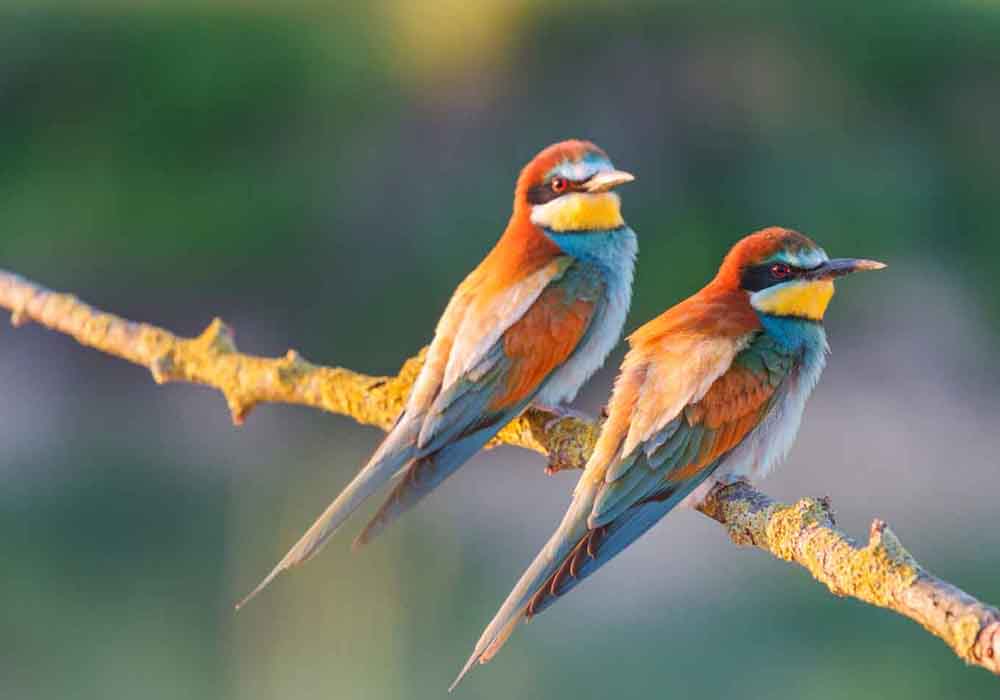Are Birds Warm or Cold Blooded?
When we think about birds, we often imagine them flying away to tropical places to keep themselves warm. Apart from that, birds lay eggs, which is generally a trait of cold-blooded animals, and they descended from dinosaurs, which should make them cold-blooded. Things get confusing here pretty quickly - so are birds warm or cold blooded?
Birds are warm-blooded animals that keep their core body temperature around 106°F (41°C) regardless of the temperature around them. Some of the ways birds keep their body temperature are migration, torpor, a fat layer for extra warmth, or panting to cool down.
Continue reading this article to find out why birds are warm-blooded and what the implications of that fact are. Also, I’ll mention numerous ways birds control their core body temperature in (often) harsh conditions.

Why Are Birds Warm-Blooded?
Every bird on the planet is warm-blooded (a fancy word for this is endothermic), which includes everything from an exotic parrot to a penguin. The main reason birds are warm-blooded is that they have a tiny area in their brain called the hypothalamus (humans also have it) that controls their body temperature (among other things).
Hold on, where do these animals get all that warmth if it’s cold? So, one of the main characteristics of warm-blooded animals is that they use all the energy from their body to heat themselves, and the primary energy source is food. The more a bird eats, the warmer it’ll be.
Additionally, confusion occurs in the connection between dinosaurs and birds. How are birds warm-blooded when their ancestors - dinosaurs - were cold-blooded? That was a fair point until fairly recently. Nowadays, studies suggest that there were some dinosaurs that were actually warm-blooded, and birds descended from them to the animals we know today.
Lastly, we have to mention baby birds. You’re probably wondering at what point this warm-blooded business of keeping the warm body temperature constant begins. Well, some older studies suggest that this process with baby birds that hatch featherless starts about nine days after hatching. Birds that are hatched with some feathers take less time.
Different Ways Birds Keep Their Body Temperature
Now that we know birds get the necessary energy to keep their body temperature ideal comes from food, let’s see some ways how birds use that energy to stay warm or cool.
Some Birds Migrate to Warmer Places
Okay, we all know this one - it’s basically what birds are known for (except flying). However, it’s important to note that not all birds partake in this yearly “routine” of flying away to warmer climates. Although migration is common for many bird species, it certainly isn’t an easy task.
Birds that migrate need a lot of energy to spend hours and days flying to distant places (sometimes on the other end of oceans or seas). Once those migratory birds find their perfect spot to spend the winter, they don’t have to worry about keeping warm. For them, the vacation can begin.
Shiver Means Warm for Birds
Have you ever watched a documentary about penguins where they show hundreds of them all close together, shivering? It’s just so sad to see them like that - but they’re actually not that cold. Shivering is just another way some birds keep warm - crazy, I know.
That shivering process keeps the muscles in the body contracted, which requires a lot of energy, but it gets the job done.

While we're on the subject of keeping warm, ever wonder how birds keep their feet warm? This was such an interesting question that we wrote a whole article dedicated to it which you can find here.
Some Birds Add a Fat Layer To Keep Them Warm
Humans aren’t the only ones who put on additional layers of winter clothes to keep warm. Birds also do that when it’s cold. Only, instead of bulky coats, they use their fat layer for warmth. So, the more food they can find, the fatter they get, and the fatter they are, the better.
Once again, penguins are a great example of this. Their fat layer allows them to ultimately survive the harsh conditions where they live. So, that’s why they hobble awkwardly like that. It all makes sense now.
Many Birds Reduce Their Energy Level To Keep Warm
Energy for keeping a body warm can be hard to come by, and many birds take necessary steps to save some of that energy whenever they can. Again, they’re like us in this respect - only we like to save electric energy to save some money, and birds do it with their own energy resources.
Therefore, some birds will actually control and reduce their body temperatures by a few degrees while sleeping at night so that they have that extra energy when they really need it.
Another name for this is torpor, and birds usually slow down their heart rate to save some of that energy. Hummingbirds are one example of birds that go through a torpor state.
Birds Pant To Cool Down
Okay, it’s not all about being warm - many birds that live in tropical places or other places during summers need to keep themselves cool. That process also requires energy and a lot of creativity.
Humans have tiny pores from which our sweat comes out, and however disgusting that sounds, it actually keeps us cool. However, birds don’t have those pores, so they found another way to reduce their body temperature - panting.
Although panting is associated with dogs, birds can and do pant also. That’s their way of “sweating.” That’s why you’ll see many birds with their tiny beaks open when it’s hot outside. They’re exchanging hot air for fresh and colder one from the atmosphere.

Birds live under all sorts of extreme weather conditions, even under extreme cold. Yet, how much do they feel the cold when they're in it? Find out in our article...Do Birds Get Cold?
Birds Will Stay Close Together for Warmth
One of the most common ways birds keep themselves warm during particularly cold days is by joining forces and warming each other with their bodies. It’s a really nice “community event” where birds get together and squeeze themselves into small groups. That way, body temperature can’t escape easily, and it’s shared through bodies pressed together.
We’re talking about the birds of the same species here. It would be a bit weird to see five different bird species trying to stay warm in one group.
When Temperature Goes Down, Feathers Go Up
I’m sure you’ve seen this somewhere at least once in your life. I’m talking about small birds that tuck their heads and tiny feet into their body and make themselves round and fluffy. They look more like small tennis balls than actual birds, which is super cute.
However, they’re not doing it for cuteness points. They’re actually keeping themselves warm. You see, some birds will fluff up their feathers. This process creates a bubble of warm air coming from their body around those feathers that are a little bit more dispersed. This can save birds a lot of energy and make them look bigger than they are.
Water Is Crucial for Balancing Birds’ Body Temperature
Just like many other animals (and humans), birds also rely on water to sustain their ideal body temperature. In most cases, water serves birds to keep them cool, although if it’s cold outside and if there’s a source of warm water, birds will gladly use it.
Fresh water sources, especially in nature, mean really cold water supply birds use mainly for drinking. However, many birds also use water to cool their bodies externally, meaning they swim in the water to cool down. In that case, we’re usually talking about a stagnant water source that’s much safer for smaller birds than some streams with running water.
Are Birds Warm Or Cold Blooded...Conclusion
Birds seem like a strange mix of warm and cold-blooded animals, but all birds are warm-blooded, which can be tough if they live in really cold places. Therefore, birds need to produce large amounts of energy which they gather through food in order to keep themselves warm or cool.
Back To The TOP Of This Are Birds Warm Or Cold Blooded Page

About the Author...
Richard Worden, a dedicated bird lover for over 20 years, I love to share my in-depth knowledge and passion for birds. Read more About Me and my expertise in this field.
- We Know Birds HOME ›
- Bird Facts and Information ›
- Are Birds Warm or Cold Blooded?
